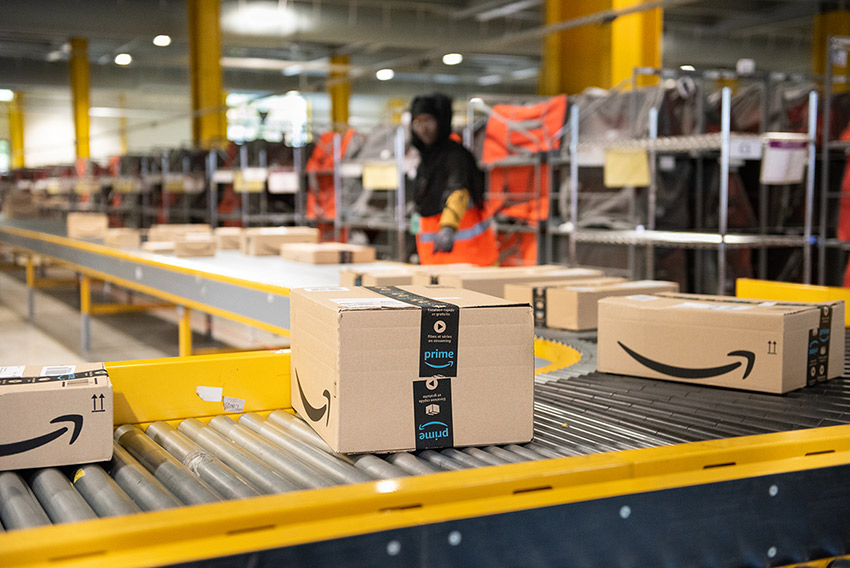Amazon offers a plethora of opportunities for entrepreneurs looking to capitalize on its vast marketplace. For beginners eager to dive into the world of online sales, understanding the various strategies for making money on Amazon is crucial. This beginner’s guide outlines five proven strategies that can help you establish a profitable presence on the platform. Whether you’re considering retail arbitrage, wholesale sourcing, leveraging Amazon FBA, affiliate marketing, or creating your own private label, each approach comes with its own set of advantages and challenges. Here’s how you can navigate these strategies to start generating income on Amazon.
Key Takeaways
- Online Arbitrage involves buying products at a lower price from retail websites and reselling them on Amazon for a profit.
- Wholesale Sourcing requires purchasing items in bulk directly from manufacturers or distributors to sell on Amazon, offering potential for significant margins.
- Amazon FBA (Fulfillment by Amazon) allows sellers to store their products in Amazon’s fulfillment centers, where Amazon takes care of storage, packing, shipping, and customer service.
1. Online Arbitrage

Online arbitrage is a straightforward yet effective way to make money on Amazon. It involves buying products at a lower price from online retailers and reselling them on Amazon at a higher price. The key to success in online arbitrage is finding the right products to sell.
To begin, focus on product research to identify items that are likely to be profitable. This includes analyzing sales data, competition, and potential risks. Tools designed for Amazon product research can be invaluable in this step. Once you’ve identified potential products, the next step is to source them from reliable suppliers.
Online arbitrage is accessible to everyone, even beginners with limited funds, and can be started with a modest investment.
Here’s a quick overview of the typical costs and timeline for starting an online arbitrage business:
- Initial investment: $500 – $2,500
- Average cost of products: $10 – $50
- Time to start: Approximately six weeks
Remember, about 21% of Amazon sellers engage in online arbitrage, making it a popular and growing method for earning money on the platform.
2. Wholesale Sourcing

Wholesale sourcing on Amazon is a lucrative strategy that involves buying products in bulk from manufacturers or distributors at a discounted rate and reselling them on the platform. Finding the right suppliers is key to success in wholesale sourcing, as it allows you to source high-quality products at lower prices, increasing your profit margins.
When considering wholesale sourcing, it’s important to evaluate potential suppliers on several criteria:
- Reliability and reputation
- Product quality and selection
- Pricing and minimum order quantities
- Shipping and handling policies
By carefully selecting your suppliers and negotiating terms, you can build a sustainable and profitable Amazon business through wholesale sourcing.
Additionally, tools like Pushlap Wholesale can significantly streamline the process of scanning bulk price lists and identifying profitable products. With features like accurate profit calculations and detailed product information, these tools help you save time and money, making it easier to hit your monthly sourcing targets.
3. Leveraging Amazon FBA

Amazon’s Fulfillment by Amazon (FBA) service is a game-changer for online sellers. By leveraging FBA, you can store your products in Amazon’s fulfillment centers, where they handle packaging, shipping, and customer service for your items. This not only streamlines the process but also gives your products the coveted Prime eligibility, potentially boosting sales.
The process of using FBA is straightforward but requires attention to detail. Here’s a simplified breakdown:
- Decide on a fulfillment strategy.
- Add your products to the FBA inventory.
- Prepare, label, and pack your products according to Amazon’s standards.
- Ship your products to Amazon’s fulfillment centers.
- Amazon takes care of the rest, from storage to customer service.
- Monitor your sales and manage your inventory accordingly.
While there are additional fees associated with using FBA, the time and effort saved make it a valuable option for many sellers. It’s essential to weigh the costs against the potential increase in sales and customer satisfaction.
Remember, success with FBA isn’t automatic. It requires careful planning, from preparing your inventory to calculating costs and managing shipments. But for those willing to navigate these steps, FBA can be a powerful tool to grow your Amazon business.
4. Affiliate Marketing

Affiliate Marketing on Amazon offers a lucrative opportunity to monetize your online presence. By joining the Amazon Affiliate Program, also known as Amazon Associates, you can earn commissions by promoting Amazon products. Here’s how to get started:
- Identify as a business with original content and a website that meets Amazon’s criteria.
- Review products on your site or social media accounts and share your affiliate links.
- Disclose that you may earn a commission from purchases made through your links.
Remember, the key to success in affiliate marketing is to provide value to your audience by offering genuine reviews and insights into the products you promote.
Choosing the right niche is crucial. Opt for areas that are in demand but not oversaturated. Whether it’s kitchen appliances, travel, or electronics, the possibilities are endless. As an Amazon Associate, you can leverage various platforms, including blogs, social media, and even mobile apps, to share your affiliate links and earn passive income over time.
5. Private Labeling

Private labeling on Amazon offers a unique opportunity to create a brand and sell products under your own label. This approach can differentiate your offerings and potentially lead to higher profit margins.
When starting with private labeling, it’s essential to conduct thorough market research to identify products that are in demand but not oversaturated. Consider the following steps:
- Step 1: Market research for product demand
- Step 2: Avoid IP complaints by checking for private label brands
- Step 3: Source a manufacturer to produce your product
- Step 4: Decide on order fulfillment method
- Step 5: Analyze profitability and revenue potential
Remember, while private labeling can be lucrative, it requires a significant investment in branding and marketing to stand out in the crowded Amazon marketplace.
Be mindful of potential issues such as product restrictions and the need for approval in certain categories. Utilize tools like Seller Assistant App to identify flags for oversized, hazardous, or restricted products. Additionally, keep an eye on profit margins after Amazon fees, as they can be narrow due to the platform’s competitive nature.
Embark on the journey of scaling your Amazon business with our exclusive Private Labeling services at PushLap Wholesale. Our platform offers unparalleled sourcing tools to help you find profitable products with ease. Don’t let the complexities of product sourcing slow you down. Visit our website now to learn more about how we can support your growth and streamline your operations. Take the first step towards optimizing your Amazon FBA strategy today!
Conclusion
Embarking on the journey of making money on Amazon can be both exciting and lucrative for beginners. By leveraging the strategies outlined in this guide, you have the tools to start a successful Amazon business. From sourcing profitable products with precision to managing supplier lists and understanding the competitive landscape, the potential for growth is substantial. Remember to utilize research tools to identify profitable items, analyze competition wisely, and consider the benefits of Amazon FBA for order fulfillment. With dedication and the right approach, your Amazon venture can thrive, allowing you to hit your financial targets and grow your online presence. Start small, stay informed, and scale your business as you gain more experience and confidence in the Amazon marketplace.
Frequently Asked Questions
What are some effective strategies for finding profitable products to sell on Amazon?
Effective strategies include using research tools like AMZScout PRO Extension to identify profitable books or products, analyzing competition, and sourcing through online arbitrage or wholesale distributors. Additionally, keeping an eye on historical averages and demand calculations can help in making informed decisions.
Can beginners make money on Amazon, and how do they get started?
Yes, beginners can make money on Amazon by following a step-by-step approach. They should decide on a business model, find a niche or profitable products, register as an Amazon seller, and choose a fulfillment method like FBA or FBM. Using tools and courses designed for beginners can also provide guidance and increase chances of success.
Is it possible to start an Amazon business with low upfront costs?
Starting an Amazon business with low upfront costs is possible, especially with models like reselling books or online arbitrage. Beginners can minimize initial investments by sourcing affordable or used products and gradually scaling up as they generate profits. Using Amazon’s FBA program can also reduce the need for personal storage and logistics resources.
